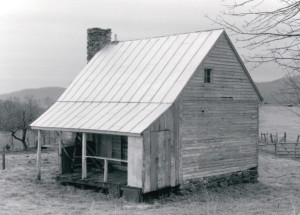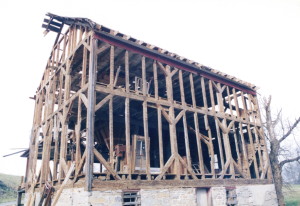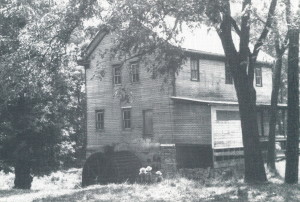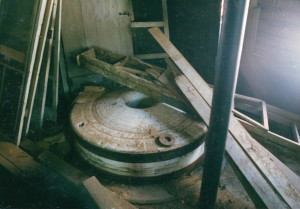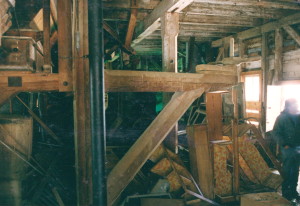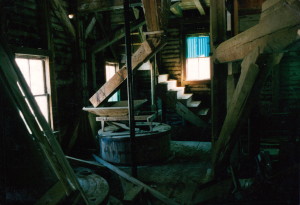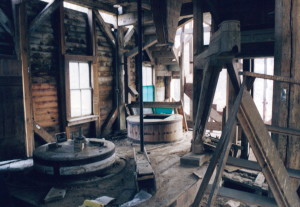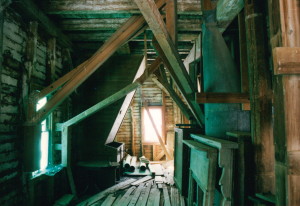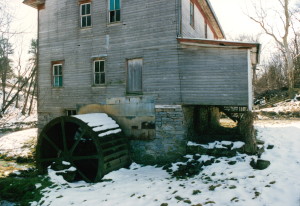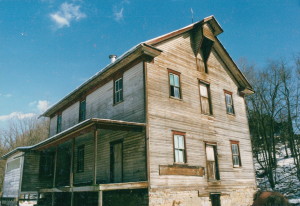The Shenandoah Mill… part 9
Noah Bradley2019-06-29T09:54:06+00:00The posts in the Mill measured 12″ by 12″ with massive bracing found both top and bottom… they might as well have been trees.
I can’t imagine the load it would take to cause something like these to fail.
Valley pine was perhaps not the best choice of wood to use when building this frame. Although it had held up for nearly two centuries (far longer than it’s builders) it was showing some age. Powder post beetles were attacking the wood, which made the wood more porous, which in turn was inviting more moisture into the wood from the damp environment found next to a river. It was a matter of time before rot took hold.
By removing all of the wood attached to the timbers we were able to treat all surfaces with Boracare which would kill all the destructive insects, now if we could find a drier environment for the frame to be re-erected…
But all my ads, and all my calls, had failed to produce someone who wanted such a structure for their own.
I was baffled.
I had always managed in the past to find a home for a orphaned structure.
Originally posted 2015-04-23 12:24:52.
The Shenandoah Mill… part 8
Noah Bradley2019-06-29T09:54:05+00:00Salvage work is messy and dangerous.
But out of all the chaos that comes with it, a timber-frame structure emerged, and it was like no other. This pine frame had posts and beams as large as any barn, but there were many more timbers here than found in any barn… she was more like a house frame… one that was on steroids.
And, look at all that bracing! Top and bottom bracing. She was as solid as a rock, even without her siding… after nearly 200 years.
A Mill has to be built strong, very strong… not only do they have to bear the weight of all that equipment and flour, but they need to hold together from all the vibrations associated with large wheels, gears, belts, and stones, all turning.
I wonder how long a structure built out of today’s glued wood-chip framing would hold up under similar strains? I doubt long, certainly not for centuries.
Originally posted 2015-04-23 11:54:48.
The Shenandoah Mill… part 7
Noah Bradley2019-06-29T09:54:04+00:00We loaded all of the materials and equipment that was in the Mill into a large tractor trailer and then started taking the Mill down.
We always start at the top and work our way down. It’s safer and more efficient that way.
At this point I’ve made countless calls trying to find a new home for this Mill and have placed ads in various publications… “Rare opportunity to adopt authentic early 1800’s Mill !”
Originally posted 2015-04-23 11:28:34.
The Shenandoah Mill… part 6
Noah Bradley2019-06-29T09:54:03+00:00I like this old black and white photo that I was given of the Mill. The three small Mennonite boys seen near the water wheel, with their white hats on, are just so precious.
In an ideal world this Mill would have gone on being useful on this site forever. But, that was not to be.
The owner of this Mill had spent years contacting historical organizations, universities, and national and state parks about assistance with this structure. All of them offered him their opinions on what he should do with his non-existent time and financial resources, but none offered any of theirs.
So the time had come for either the fire department to practice their form of removal, or for me to do mine.
Originally posted 2015-04-22 16:08:08.
The Shenandoah Mill… part 3
Noah Bradley2019-06-29T09:54:00+00:00As you can see, “the chase” (where the water once flowed to power this Mill), had long ago filled in with soil and had partially buried the waterwheel. (We would later find that the bottom half of this wheel had rusted away).
Pre-Civil War barns and mills are rare in Virginia.
The Northern armies were ordered to burn all these structures as that War neared it’s end. The story goes that a team of Northern men were sent to burn this mill, but when they found that the Southern men who were guarding the Mill were also members of the Masons, they agreed to let the Mill stand.
Originally posted 2015-04-22 13:56:23.
The Shenandoah Mill… part 2
Noah Bradley2019-06-29T09:53:59+00:00Towns and cities often grew up around Mills… which were the economic engines of many communities. These Mills turned the crops of an agricultural nation into products that could be bartered or sold. Stores, services, bars, and banks, popped up nearby to absorb the money that farmers made.
They were gorgeous to look upon and their workings were a wonder to behold. I imagine the front porch of this Mill was once the community’s main source of news and information as wheat was loaded onto wagons.
The Shenandoah Valley was once known as the breadbasket of this nation. It was a different time. I would have loved to have seen it.
This Mill started out it’s life grinding flour on millstones, but later was converted to a roller mill system that could better refine the floor.
For reasons unknown to me this Mill began experiencing dramatic flooding. The Mill was closed, the roller milling equipment was removed, and parts of the Mill began to decay.
Originally posted 2015-04-22 13:19:23.

